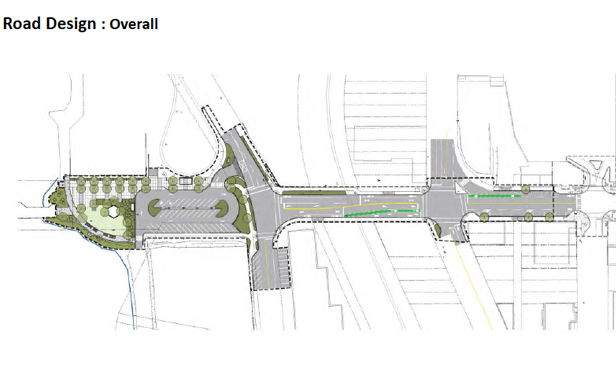Costs, timeframe increase on Hall Street phase two project
Costs have risen for the Hall Street project even before phase two construction has commenced in earnest, with another phase being added to the second phase of the Stores to Shores scheme.
City council adopted an amendment to its Five Year Financial Plan in a meeting late last week, calling for the overall budget for the project to be extended over a three-year period — from 2016 (design phase) to 2018 (construction) — with an increase cost of two per cent ($166,000).
“This is the result of more extensive storm water work and projected construction price increases and is in the contingency at this stage,” said city chief financial officer Colin McClure in his report to council.
The total budget for the project is $6,827,000. The major change to the Financial Plan is the splitting of the capital costs of the project and the grant funding between 2017 and 2018, effectively creating two phases out of the second phase.
City manager Kevin Cormack said the current budget maximizes the grant amount of $4,441,016 (two thirds of the project) and allows for a “larger contingency to address the impact of the more extensive work required in storm water and higher prices we are seeing as a result of a busy construction market.”
He noted that the both the water main replacement aspect of the project and sanitary sewer costs increased.
“These increases were absorbed by the contingency being carried at the 30 per cent design phase,” he said. “The project will now be phased over two years.”
After the Five Year Financial Plan Bylaw was adopted in May, work had continued on finalizing the design, cost and the timing of the work for the Hall Street phase two project.
In the original 2017-2021 Five Year Financial Plan the goal was that phase two of Hall Street would be completed in 2017.
However, the second phase of the project involved work in Kootenay Lake, the CPR crossing, Highway 3A, storm water work and represented the only road to the west Lakeside commercial district.
Permitting from the Ministry of Environment for the foreshore portion of the work, approvals from CP Rail, private landowners and the provincial Ministry of Transportation was also needed.
“(C)oupled with the intricacies of the closing of high traffic intersections while trying to minimize the effect of such closures on the business community it became evident that the project would need to be split between the 2017 and 2018 years,” said McClure.
He said the detailed design drawings for the project revealed that the cost of water and storm water work was a larger part of the project than originally anticipated.
Using above ground features to manage storm water was not viable and storm improvements need to be done completely underground, Cormack added, in order to avoid flooding at the Hall and Front intersection during rainstorms.
The extra consideration meant more of the Build Canada grant needed to be allocated to the storm water work (funded from operations), while the water and sanitary sewer utility reserves would then be allocated less of the grant.
“These changes will allow the city to complete the project without the need to borrow, which was part of the original financial plan,” McClure explained. “This has minimal impact on the long-term reserves in the water and sanitary sewer reserve funds.”
City staff also worked with the consultants to simplify the temporary access at Cedar Street to reduce the cost of that portion of the project, Cormack said.
This year the work will involve the portion of the road south of the Lakeside Drive and Hall Street intersection, with the waterfront park, paving and underground sewer and water put in to the lake. As well, the intersection of Lakeside Drive and Hall Street would be reworked.
Cedar Street will be extended to join with Lakeside Drive to take traffic pressure off lower Hall St. during construction.
It is not uncommon for “opportunities or changes” in what had been planned to arise as the year progresses, said Cormack. The Five Year Financial Plan was adopted earlier in the fiscal year.
To comply with the Community Charter and to allow the city to act on opportunities or make significant changes to projects during the year, an amendment with the proposed changes had to be adopted by council by bylaw.



























